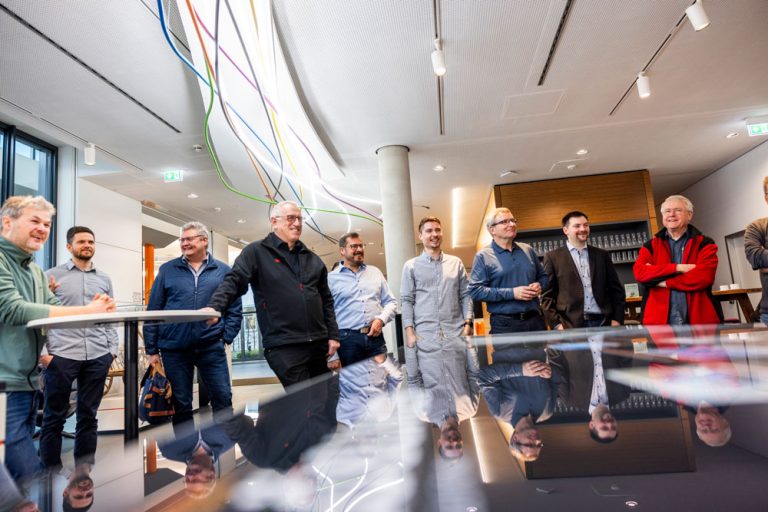
In increasingly networked industrial environments, electromagnetic compatibility (EMC) is becoming increasingly important. This is because unwanted currents, known as leakage currents, can occur on protective cables (PE) and equipotential equalisation cables (PA), especially in industrial plants in which motors controlled by frequency converters are used. These often have negative effects on machines and systems. The Technical University (TU) of Darmstadt has therefore initiated the “PEPA” research project to “determinate, predict and reduce PE/PA currents in networks with a high proportion of frequency converters.” It was funded by the Federal Ministry for Economic Affairs and Climate Protection as part of the “Research for an environmentally friendly, reliable and affordable power supply” tender. The project partners from research and industry worked on various aspects of the topic under the project management of Project developer Jülich, including the leading provider of integrated solutions and branded products in the field of cable and connection technology, which developed zeroCM® technology for reducing leakage currents for the project. The second round of PEPA has been running since November 2023 with a full budget of 1.39 million euros for a three-year period. LAPP is working on further improving EMC for cables for drive systems, particularly for servomotors.


Innovative cable design increases EMC
In the first PEPA project, LAPP was responsible for the work package “Couplings between neighbouring cables and with system parts. Measurements and optimisation of the cable design”. Stefan Hilsenbeck, Head of Advanced Technology Development at LAPP, explains: “The cross-company research was interesting and attractive for LAPP because we were able to work together with our partners on a complex topic from the world of automation and drive systems. Among other things, this involved the correct selection and professional installation of the connection components – and we at LAPP naturally have a lot to contribute in this regard.“
Based on the measurement results of the reference structure, which was developed in-house within the research project, LAPP engineers developed a new approach to EMC in cable technology. Previously, the construction was based on small outer diameters and optical symmetry, while the EMC problem was usually solved by shielding. With zeroCM®, LAPP is now taking a different path: the cable is visually asymmetrical, but achieves complete electromagnetic symmetry while simultaneously using reduced shielding. The effectiveness of this approach was confirmed in a research project with a prototype cable, now a series product under the name of ÖLFLEX® SERVO FD zeroCM, through tests with the project partners.
PEPA 2: Further development work for the future of the Smart Factory
Although the new technology does not eliminate the causes of leakage currents, it does reduce them by up to 80 percent. This also reduces the load on the frequency converter, so that longer cables can be used without exceeding the specifications of the converter. In addition, zeroCM® technology prevents voltage levels on the mass/earthing potential on the consumer side, which is particularly important when analogue encoders or other sensitive sensors are used, for example.
In the second round of the research project, LAPP is analysing the role of hybrid cables in interference current flows and is working on a so-called One-Cable Solution (OCS) for servomotors. The background: Servomotors, which are often used in industrial machines and systems, are traditionally supplied by two cables – a power cable and a data cable that transmits various parameters such as the speed, angular position of the rotor or the temperature to the controller. With one-cable solutions, data and power cores are integrated into a common cable. Here, LAPP already offers a wide range of products in line with the common manufacturers and transmission standards. When developing such cables, great care must be taken to ensure that the strong currents in the power cable do not “crosstalk” onto the sensitive data channel of the control cable, i.e. that they cannot lead to interference signals.
The innovative zeroCM® technology approach will be used to further reduce cross-coupling in combined power and control cables for servomotors in addition to reducing leakage currents. The advantages of a solution with just one cable are manifold: one cable takes up less space than two, the approach saves material, reduces the complexity of the connection and facilitates the dynamic routing of cables, for example in cable chains.


Stefan Hilsenbeck comments: “We were extremely satisfied with the result of PEPA: with zeroCM® technology, we have not only developed an innovation that offers tangible advantages to our customers as part of the development towards the Smart Factory, but we have also been able to build up on generally important expertise on topics such as EMC and drive systems, which are highly relevant to our customers and ourselves. This is why we were immediately on board for the successor project PEPA2 and look forward to the opportunity to collaborate with our partners from research and industry, including SEW, Danfoss, Magnetec, Bender and Dovitech.“
LAPP’s involvement in PEPA and PEPA2 is divided into a whole range of research projects in which the company is involved, including projects on direct current (DC-INDUSTRIE, DC-INDUSTRIE2, ODCA), energy grids in automated production plants (DC|hyPASim) or the development of solutions for photovoltaics integrated into construction works (BIPV, BIPV2 and BALDACHIN).
